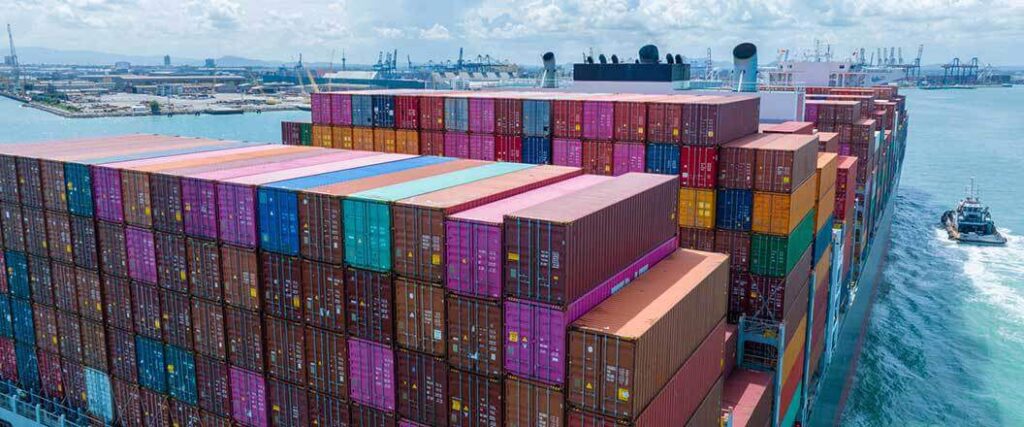Export credit insurance (ECI) plays a vital role in the exporting industry. When engaging in international trade, exporters run the risk of non-payment for goods that have been shipped. This can result in a predictably negative impact on profit and operations.
As per the Export-Import Bank of the United States (EXIM), export credit insurance is a key tool in international commerce. It offers protection against the risk of non-payment by overseas buyers. This insurance empowers businesses to safely expand into new markets, driving global trade, while safeguarding their finances.
Join us as we break down the details of export credit insurance, including the different types available and the advantages of being insured against non-payment.

ECI is a type of export risk insurance designed to protect exporters when foreign buyers fail to pay for goods received. Sometimes referred to as trade credit insurance, it ensures that you get paid for the goods or services you export, even if your foreign buyer defaults or is unable to pay.
This insurance plays an important role in international trade. It provides exporters with the confidence to extend credit to buyers overseas, safe in the knowledge that their finances are protected. It’s a tool that encourages and enables businesses to tap into foreign markets, fostering international trade and economic growth.
Although often grouped with other forms of export insurance, ECI is unique.
Here are some of the other types of export insurance and how they differ from ECI.
ECI stands apart from these, focusing specifically on the financial risk of non-payment by the foreign buyer. In other words, if you want to protect yourself from the financial impact of physical damage, you’re going to need to invest in further insurance.
While there are a few options available, export credit risk insurance is straightforward. The following hypothetical scenario illustrates how the process works.
This relatively simple process prevents significant losses for the exporter. They’ll be able to continue participating in international commerce with minimal interruption to cash flow.

Just how many major advantages are in export credit insurance? While insuring against non-payment is the primary function of ECI, the advantages of being insured extend much further.
Having an ECI policy in place safeguards the export company's bottom line. In turn, this enables strategic business decisions that drive growth and profitability.
The benefits of export credit insurance include:
Now that we’ve defined what ECI is and its benefits for exporters, let’s take a look at the three main types of export credit insurance.

Export credit insurance companies offer three main types of ECI: single-buyer, multi-buyer, and express. They differ based on the length of time they’re effective and the circumstances under which they’re purchased.
Understanding the different types of export credit insurance policies available is crucial for exporters. Each type of policy caters to different business needs and operating environments.
Let's delve into the specifics.
Policies are further separated into short term and medium term contract lengths.
In the following table, you can see some examples of how much an exporter stands to recuperate on an export transaction under a few different circumstances.
| Transaction Value | Reason for Non-Payment | Policy Type | Funds Recuperated |
| $100,000 | Inability to convert currency | Express, short term | $95,000 |
| $500,000 | Government seizure of property | Single buyer, short term | $475,000 |
| $1,000,000 | Political instability | Multi buyer, medium term | $850,000 |
Percentages sourced from exim.gov
While the reasons for non-payment have no bearing on the claim itself, they do serve to illustrate the unique challenges that make export credit insurance so vital to export businesses.
Each type of export credit insurance policy has its own benefits and is suited to different trading situations. It's important for an exporter to assess their unique requirements. The right insurance policy can be a significant asset, helping businesses to grow and thrive in international trade.

Always purchase export credit insurance coverage prior to finalizing a price with your buyer. The cost of insurance can and should be factored into your operating costs. In turn, it should be a determining factor in your overall selling price.
If you’re trying to decide whether you should insure your sale in the first place, take the following factors into account.
Like any form of risk insurance, the greater the uncertainty surrounding a transaction, the greater your need for ECI becomes.
Keep in mind that ECI only covers non-payment from your potential buyers. If you’re looking for advice about what kind of cargo insurance you need to protect against other risks, or any other aspect of the export business, we’re here to help.
Non-payment is just one of the potential perils faced by exporters. At Cargo Export USA, we have the experience and know-how to assist you with your export transactions, preventing many problems before they come up.
Our certified consultants can help you decide which export credit insurance policies are best.
Our extensive list of services includes:
Don’t take chances with your exported cargo. Call our team of experts at (866) 301-0635 or connect with us online today and get started on the path to export excellence.